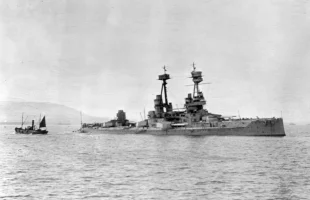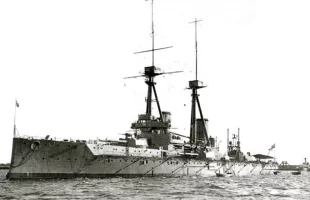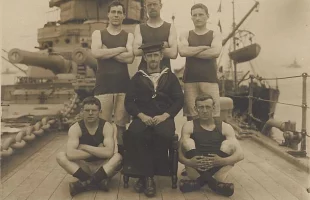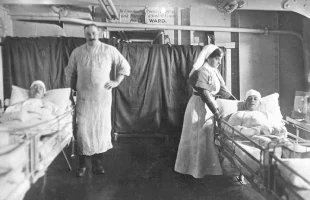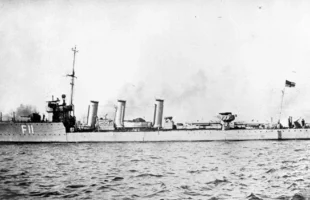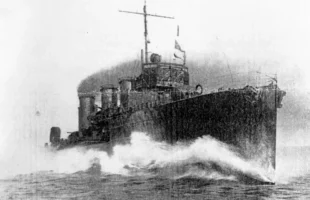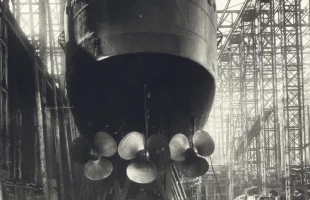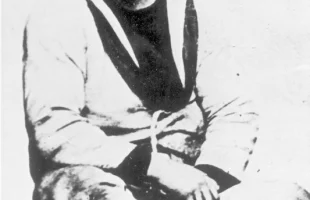World War I – Vanguard, Opal, Narbourgh
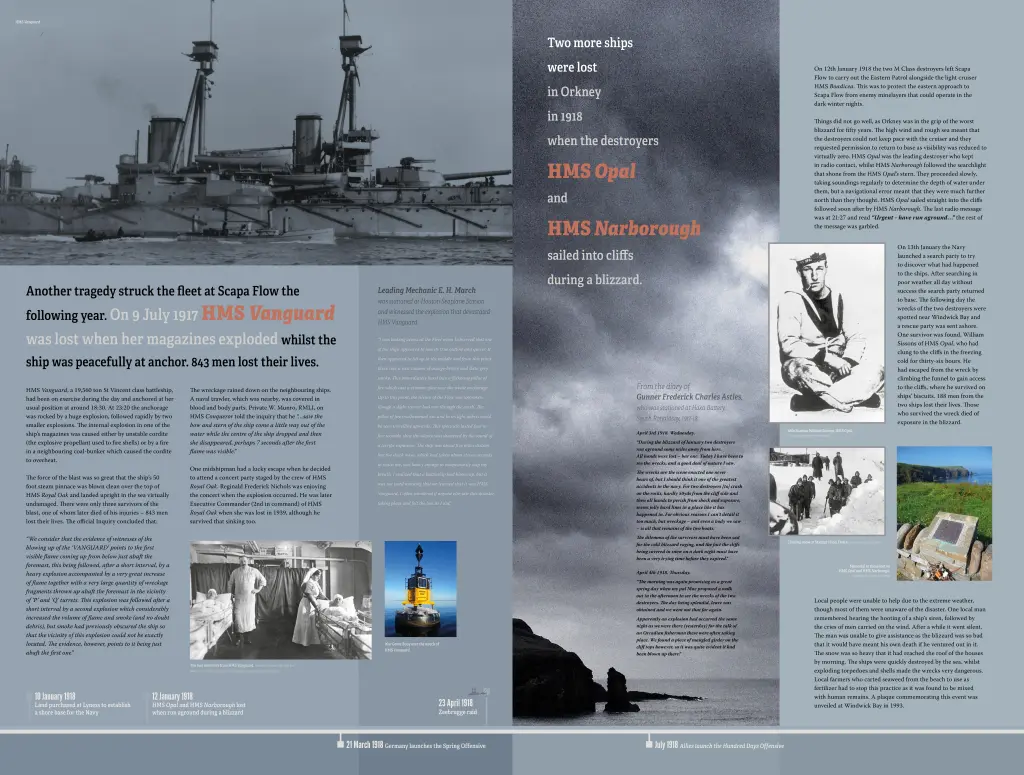
Another tragedy struck the fleet at Scapa Flow the following year. On 9 July 1917 HMS Vanguard was lost when her magazines exploded whilst the ship was peacefully at anchor. 843 men lost their lives.
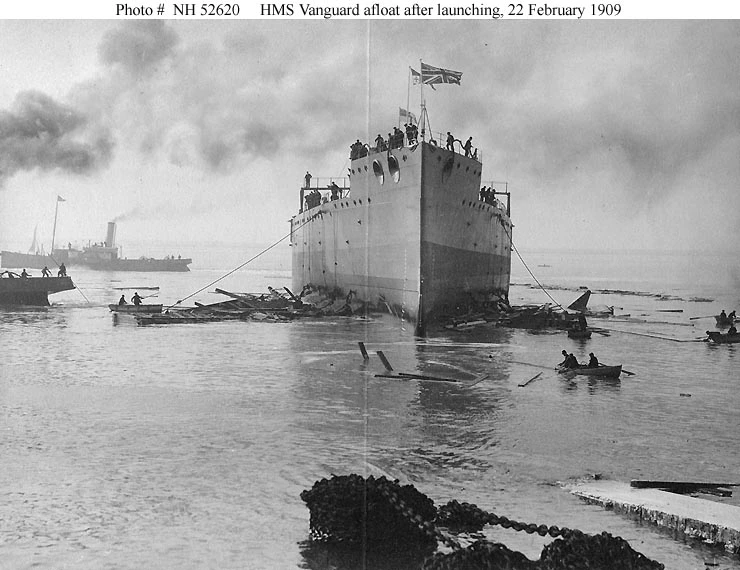
HMS Vanguard, a 19,560 ton St Vincent class battleship, had been on exercise during the day and anchored at her usual position at around 18:30. At 23:20 the anchorage was rocked by a huge explosion, followed rapidly by two smaller explosions.
The internal explosion in one of the ship’s magazines was caused either by unstable cordite (the explosive propellant used to fire shells) or by a fire in a neighbouring coal-bunker which caused the cordite to overheat.
The force of the blast was so great that the ship’s 50 foot steam pinnace was blown clean over the top of HMS Royal Oak and landed upright in the sea virtually undamaged. There were only three survivors of the blast, one of whom later died of his injuries – 843 men lost their lives. The official Inquiry concluded that:
“We consider that the evidence of witnesses of the blowing up of the ‘VANGUARD’ points to the first visible flame coming up from below just abaft the foremast, this being followed, after a short interval, by a heavy explosion accompanied by a very great increase of flame together with a very large quantity of wreckage fragments thrown up abaft the foremast in the vicinity of ‘P’ and ‘Q’ turrets.
This explosion was followed after a short interval by a second explosion which considerably increased the volume of flame and smoke (and no doubt debris), but smoke had previously obscured the ship so that the vicinity of this explosion could not be exactly located. The evidence, however, points to it being just abaft the first one.
The wreckage rained down on the neighbouring ships. A naval trawler, which was nearby, was covered in blood and body parts. Private W. Munro, RMLI, on HMS Conqueror told the inquiry that he “…saw the bow and stern of the ship come a little way out of the water while the centre of the ship dropped and then she disappeared, perhaps 7 seconds after the first flame was visible.”
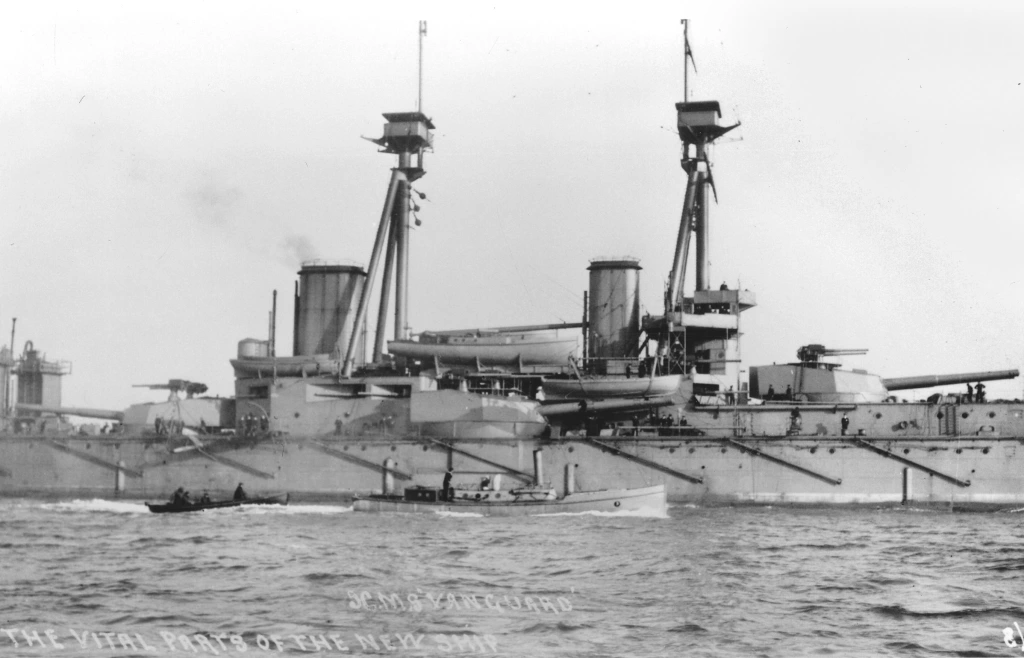
One midshipman had a lucky escape when he decided to attend a concert party staged by the crew of HMS Royal Oak. Reginald Frederick Nichols was enjoying the concert when the explosion occurred. He was later Executive Commander (2nd in command) of HMS Royal Oak when she was lost in 1939, although he survived that sinking too.
Leading Mechanic E. H. March was stationed at Houton Seaplane Station
and witnessed the explosion that devastated HMS Vanguard.
“I was looking across at the Fleet when I observed that one of the ships appeared to lose its true outline and quiver. It then appeared to lift up in the middle and from this point there rose a vast column of orange-brown and slate-grey smoke. This immediately burst into a flickering pillar of fire which cast a crimson glow over the whole anchorage. Up to this point, the silence of the Flow was unbroken, though a slight tremor had run through the earth. The pillar of fire mushroomed out and in its light debris could be seen travelling upwards.
This spectacle lasted four or five seconds, then the silence was shattered by the sound of a terrific explosion. The ship was about five miles distant but the shock wave, which had taken about eleven seconds to reach me, was heavy enough to momentarily stop my breath.
I realized that a battleship had blown up, but it was not until morning that we learned that it was HMS Vanguard. I often wondered if anyone else saw this disaster taking place and felt the loss as I did.”
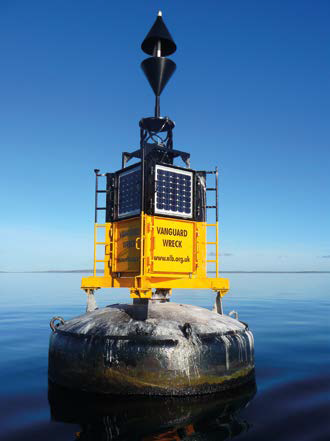
Two more ships were lost in Orkney in 1918 when the destroyers HMS Opal and HMS Narborough sailed into cliffs during a blizzard.
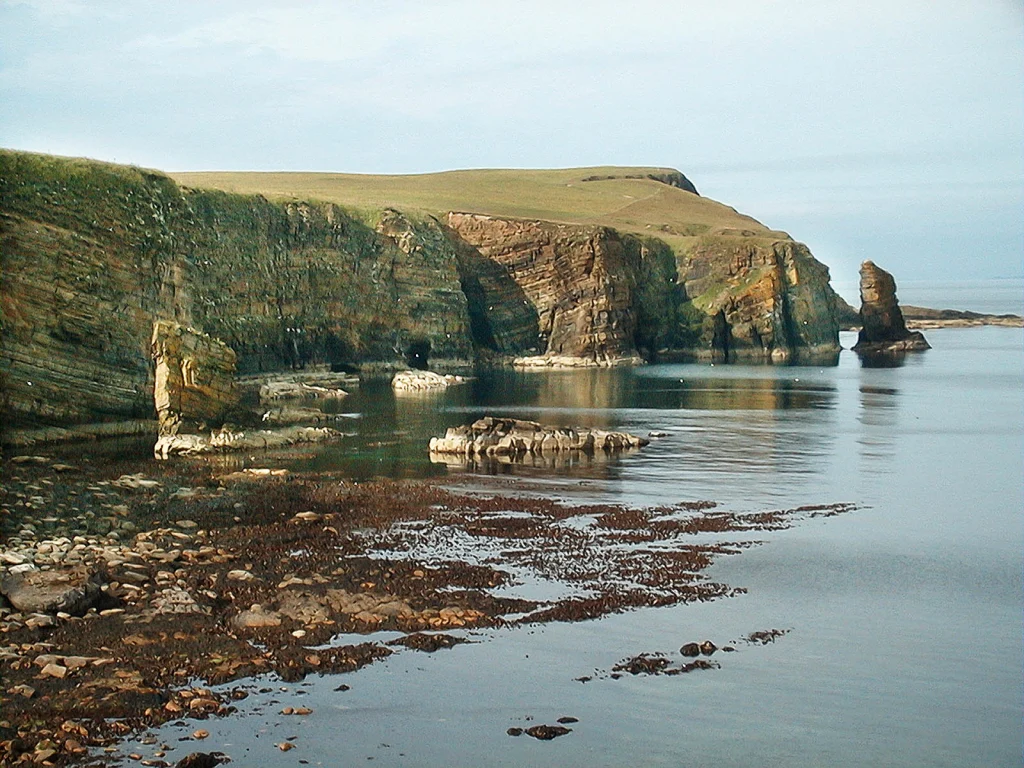
On 12th January 1918 the two M Class destroyers left Scapa Flow to carry out the Eastern Patrol alongside the light cruiser HMS Boadicea. This was to protect the eastern approach to Scapa Flow from enemy minelayers that could operate in the dark winter nights.
Things did not go well, as Orkney was in the grip of the worst blizzard for fifty years. The high wind and rough sea meant that the destroyers could not keep pace with the cruiser and they requested permission to return to base as visibility was reduced to virtually zero.
HMS Opal was the leading destroyer who kept in radio contact, whilst HMS Narborough followed the searchlight that shone from the HMS Opal’s stern. They proceeded slowly, taking soundings regularly to determine the depth of water under them, but a navigational error meant that they were much further north than they thought.
HMS Opal sailed straight into the cliffs followed soon after by HMS Narborough. The last radio message was at 21:27 and read “Urgent – have run aground…” the rest of the message was garbled.
On 13th January the Navy launched a search party to try to discover what had happened to the ships. After searching in poor weather all day without success the search party returned to base. The following day the wrecks of the two destroyers were spotted near Windwick Bay and a rescue party was sent ashore.
One survivor was found, William Sissons of HMS Opal, who had clung to the cliffs in the freezing cold for thirty-six hours. He had escaped from the wreck by climbing the funnel to gain access to the cliffs, where he survived on ships’ biscuits. 188 men from the two ships lost their lives.
Those who survived the wreck died of exposure in the blizzard.
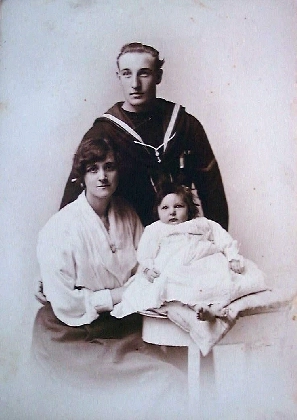
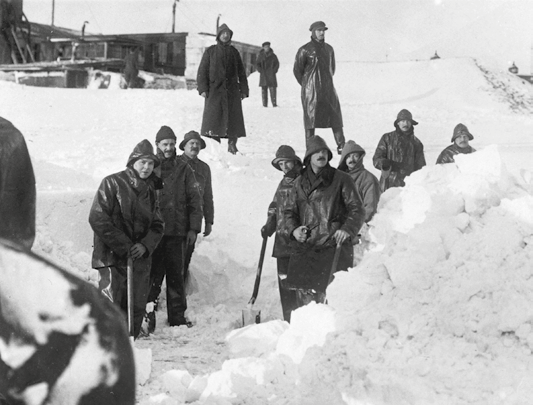
Local people were unable to help due to the extreme weather, though most of them were unaware of the disaster. One local man remembered hearing the hooting of a ship’s siren, followed by the cries of men carried on the wind. After a while it went silent. The man was unable to give assistance as the blizzard was so bad that it would have meant his own death if he ventured out in it. The snow was so heavy that it had reached the roof of the houses by morning.
The ships were quickly destroyed by the sea, whilst exploding torpedoes and shells made the wrecks very dangerous. Local farmers who carted seaweed from the beach to use as fertilizer had to stop this practice as it was found to be mixed with human remains.
A plaque commemorating this event was unveiled at Windwick Bay in 1993.
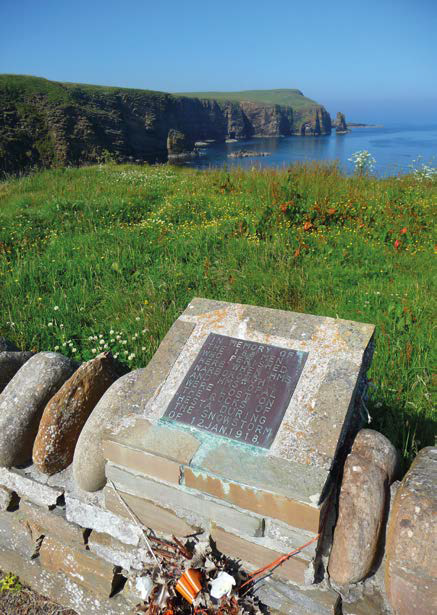
From the diary of Gunner Frederick Charles Astles, who was stationed at Hoxa Battery,South Ronaldsay, 1917-18.
April 3rd 1918. Wednesday.
“During the blizzard of January two destroyers ran aground some miles away from here. All hands were lost – bar one. Today I have been to see the wrecks, and a good deal of nature I saw. The wrecks are the scene enacted one never hears of, but I should think it one of the greatest accidents in the navy. For two destroyers [to] crash on the rocks, hardly 50yds from the cliff side and then all hands to perish from shock and exposure, seems jolly hard lines in a place like it has happened in.
For obvious reasons I can’t detail it too much, but wreckage – and even a body we saw – is all that remains of the two boats. The dilemma of the survivors must have been sad for the cold blizzard raging, and the fact the cliffs being covered in snow on a dark night must have been a very trying time before they expired.”
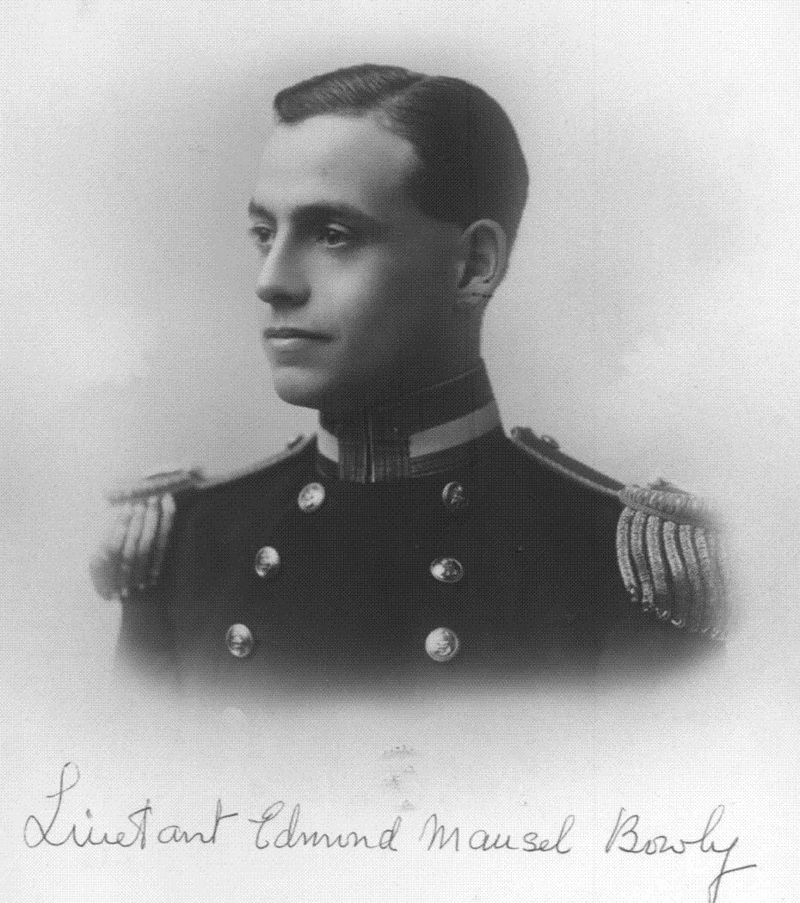
April 4th 1918. Thursday.
“The morning was again promising us a great spring day when my pal Mac proposed a walk out in the afternoon to see the wrecks of the two destroyers. The day being splendid, leave was obtained and we went out that far again. Apparently an explosion had occurred the same night as we were there (yesterday) for the talk of an Orcadian fisherman these were often taking place. We found a piece of mangled girder on the cliff tops however, so it was quite evident it had been blown up there.”

Scapa Flow Museum is currently closed for a major refurbishment project, funded by Orkney Islands Council, National Lottery Heritage Fund, Historic Environment Scotland, Highlands and Islands Enterprise, Museums Galleries Scotland, Scottish Natural Heritage and the Orkney LEADER fund. The project includes carrying out essential repairs to Pumphouse No. 1 and building an extension to house a new gallery, visitor facilities and café.
Visitors can virtually explore the buildings and former exhibitions at www.hoydrone.com/museum, a 3600 photo record of the main site museum site.
The Island of Hoy Development Trust website www.hoyorkney.com has a large Wartime Heritage section focusing on the WW2 history of Hoy.
Stay connected to Scapa Flow Museum for the latest news, stories, exhibitions, events and visitor information.
Support us
Your support is vital and helps the Museum to share the collection with the world.
St Magnus Cathedral relies on support from a wide range of sources and there are many ways that you can donate to help care for and preserve the collection for future generations. You can donate as an individual, or through a foundation, trust or company. Your support helps us to do the following:
- Create world-class exhibitions and gallery displays
- Care for, study and share the collection
- Engage local and global communities with what we do
To learn more about how you can support St Magnus Cathedral

